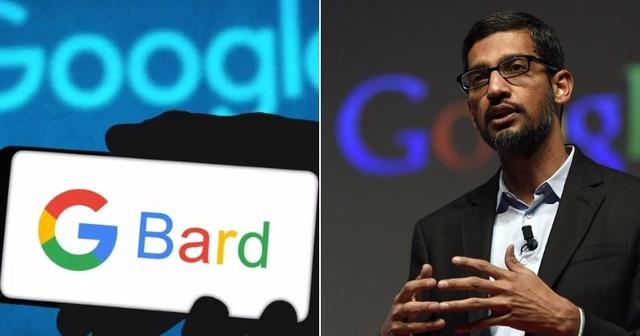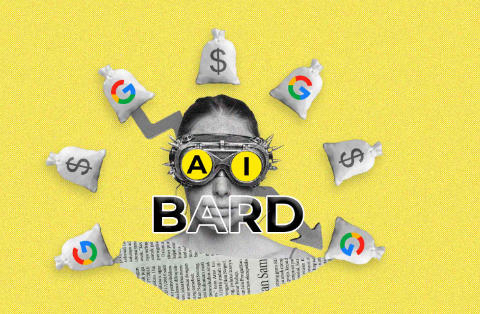Google has introduced Bard, a creative AI chatbot designed to compete with OpenAI’s ChatGPT and Microsoft’s Bing Chat. Unlike its competitors, Bard generates information directly from its model rather than retrieving search results. Bard is envisioned as an important part of the Google Search experience, assisting users in coming up with ideas and answering queries. In an increasingly competitive landscape, Google’s goal is to perfect and integrate Bard into its ecological system, highlighting the company’s dedication to inventiveness and maintaining its dominance in the search world.
What exactly is ChatGPT?
ChatGPT is trained on a massive collection of articles, images, websites, and social-media posts tapped from web pages and as well as actual conversations (primarily in English) with OpenAI-hired human contractors. It discovers to mimic writing grammar, structure, and structure, as well as frequently used phrases. It also learns to recognize the patterns and shapes in images, such as a cat’s, a child’s, or a shirt’s contours. It can also match phrases and keywords to those shapes and patterns, allowing users to inquire about a photo’s contents, such as what a feline is doing or the color of the shirt.

The chatbot is not always correct. Its sources aren’t verified, and it relies on human input to improve its accuracy.
What is the functionality of ChatGPT and other AI chatbots?
ChatGPT‘s technology is referenced in the second half of its name, GPT, which indicates Generative Pre-trained Transformer. Transformers are specialized algorithms for detecting long-term patterns in data sequences of words. A transformer develops the ability to foresee not only the next word in a sentence but also the following sentence in a paragraph and the following paragraph in an essay. This is how it manages to stay on the topic over long stretches of text.

Because a transformer necessitates a massive amount of data, it is trained in two stages: first, it undergoes preliminary training on generic data, which is easier to collect in large quantities, and then it is tuned on customized data for the specific task it is meant to perform. ChatGPT was pre-trained on a massive online text repository to learn the rules and structure of language, and it was fine-tuned on conversation transcripts to acquire knowledge of the traits of a conversation.
What are people saying about ChatGPT?
Executives, engineers, job candidates, and college students are all rushing to use ChatGPT to help them speed up their work, whether it’s drafting emails and generating code for applications or writing applications and English essays.

Some managers have since noticed an increase in ChatGPT-generated answers from contenders and are debating how to evaluate such candidates. To prevent cheating, some schools have blocked entry to the service on their computer systems, while others actively encourage learners to use the tools ethically.
Introducing Bard
Google’s Creative Collaborator Google’s Bard, an advanced AI chatbot, aims to give users a smooth user interface in the search and information retrieval domains. Bard, which was created in response to the increasing popularity of OpenAI’s ChatGPT and Microsoft’s Bing Chat, exemplifies Google’s ongoing pursuit of splitting technique and advances to its search platform.

One of Bard’s distinguishing features is its ability to generate data directly from its internal model. This distinguishes it from other chatbots that rely on search results to provide answers. This feature enables Bard to act as a creative collaborator, assisting users in brainstorming ideas, answering questions, and exploring various topics.
During a live demonstration at Google’s London headquarters, Bard demonstrated its versatility by offering creative ideas for a bunny-themed children’s birthday party and various houseplant care tips. This demonstrated Bard’s broad range of applications, which makes it a useful addition to the Search Engine experience.
Bard’s Development: Obstacles and Innovations
Google has a lot riding on Bard’s success, especially since Microsoft is collaborating with OpenAI to challenge Google’s dominance in search. Google’s initial response was a blunder, resulting in a $100 billion drop in the company’s value. As different language models have become valuable intellectual property, the development of Bard is shrouded in secrecy. It is based on a new version of Google’s LaMDA and will also be updated as technology progresses. Bard, like ChatGPT and GPT-4, is refined through deep learning from human feedback, resulting in more valuable and less dangerous responses.

Despite months of development behind closed doors, Google regards Bard as experimental. The chatbot is now free for users on a waitlist in the United States and the United Kingdom who might just help test and refine the technology. Google’s prez of research, Zoubin Ghahramani, has emphasized the importance of consumer feedback and the company’s awareness of practical pitfalls with large language models.
- Other names, such as Margaret Mitchell, current head ethics scientist at AI startup Hugging Face and former co-lead of Google’s AI ethics team, have expressed skepticism about Google’s “experimental” label for Bard, implying that it is a PR ploy.
- Bard is intended to supplement rather than replace Google Search. Users are encouraged to use Google Search to verify Bard’s responses, and interaction limits have been implemented to keep the chatbot on track during deep discussions.
Google is cautious about content, and requests for explicit, illegal, harmful, or sensitive data are not permitted. Bard also refuses to give medical advice. The generation of three response draughts, allowing users to choose or mix their favorite answer, is a unique feature of Bard, emphasizing the chatbot’s inability to generate perfect responses.
Though Bing does not intend to replace Search, given the competition from OpenAI, Microsoft, and others, the incorporation of massive language models into Search could happen sooner rather than later.



